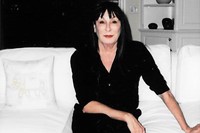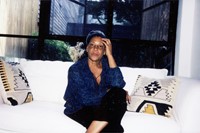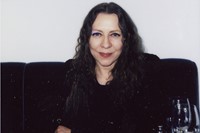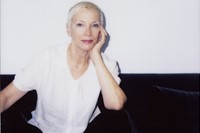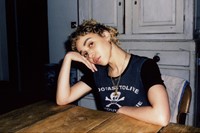“It’s a journey that I will forever carry with me,” says Hugo Huerta Marin of his new book, in which we meet trailblazing female forces, from FKA twigs to Rei Kawakubo
Hugo Huerta Marin spent seven years travelling around the world to create his new book Portrait of an Artist: Conversations with Trailblazing Creative Women. In the staggering 450-page tome, we meet – and enter the homes, studios, and private spaces of – 26 of the world’s most inspiring creative women.
The Mexico-born, New York-based artist and art director of Marina Abramović’s studio began the project one summer night in upstate New York. He was on a trip with the legendary performance artist, when he was struck by the sudden urge to take her portrait. “I wanted to capture her essence through a lens, but also through her words, in the most candid way possible,” writes Huerta Marin in the book’s introduction. “The conversational side of that study was more successful than I had ever dared to hope.”
Moved by the intimate experience of this first portrait and interview, Huerta Marin set about meeting with trailblazing female forces who have each, in their own right, shifted the worlds of fashion, film, music, photography and art. This includes Cate Blanchett, Annie Lennox, Miuccia Prada, Anjelica Huston, Carrie Mae Weems, Diane von Fürstenberg, Yoko Ono, Tracey Emin, Catherine Deneuve, Shirin Neshat, Ann Demeulemeester, Tania Bruguera, Rei Kawakubo, Kiki Smith, ORLAN, Julianne Moore, Inez van Lamsweerde, Charlotte Gainsbourg, FKA twigs, Uma Thurman, Isabelle Huppert, Jenny Holzer, Debbie Harry and Agnès Varda.
In a series of pared-back Polaroids, Huerta Marin’s subjects are tenderly depicted as real people rather than towering idols. The images are also teamed with thoughtful interviews, which delve into the histories, hopes and dreams of each artist. “Collectively, I would say there is a certain sense of resistance in their work,” says Marin. “I think they really knew how to break the mould and change the game. And to me, I think this is the most important thing, and what makes these artists pioneers.”
“It was really important to me to feature female artists from different backgrounds,” he continues. “Their approach to art is so different – interviewing someone like Miuccia Prada in Milan was very different to Tania Bruguera from Cuba. But both experiences were really enlightening to me, because, talking to Tanya, coming from Cuba and being almost exiled from the country, it was very important to me to hear how she uses art as a tool for social change. At the same time, I think Miuccia uses it in the same way because she is really pushing boundaries. So I think all of the journey was very instructive to me, and it really changed the perspective I have within contemporary art, within fashion and film.”
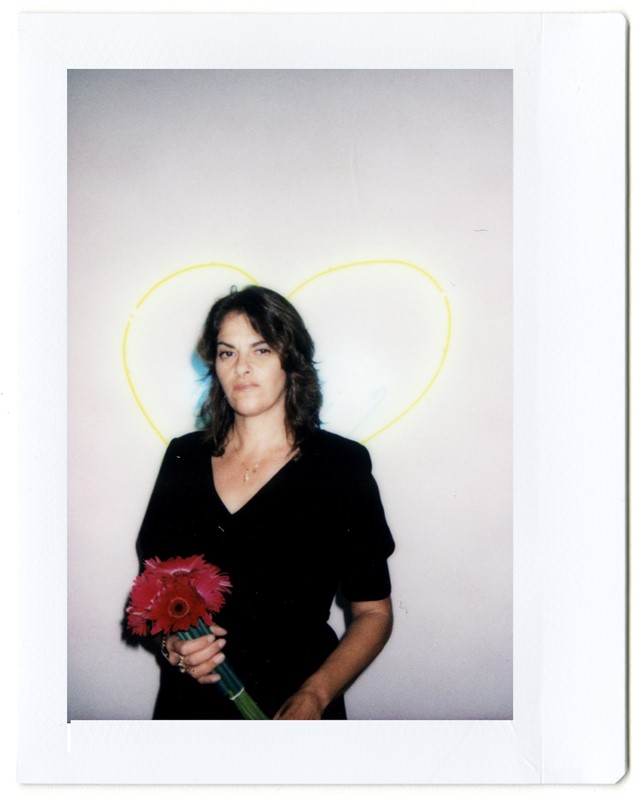
Reflecting on capturing the book’s organic series of Polaroids, Huerta Marin admits, “I was very nervous sometimes, I will be honest. For instance, Catherine Deneuve was portrayed by the greatest photographers of the century, so there was pressure. But somebody told me that, as an artist, you have to work from a place of having no sense of consequence. I think Catherine Deneuve was really happy in the end with the Polaroid, so I was just following my instinct and trying to be as true to myself as I could.”
Amid cerebral conversations on the intersection of art and politics, the meaning of beauty, and the rise of the artist as celebrity, we learn some surprising things about these women: that Miuccia Prada trained as a mime before fashion, for example; that Tracey Emin collects Edwardian erotica; that John Steinbeck dressed up as Santa Claus at Anjelica Huston’s house at Christmas. “I was very surprised and pleased that these women are kind, candid and authentic,” says Huerta Marin. “Obviously, they have a very strong position about stuff, but they all want the same in the end because that's what makes us human.”
The book also reveals a web of influence between generations of female artists, and there are several quite touching moments when the book’s subjects reference each other. In her interview, Uma Thurman reveals her first album was by Blondie, while Diane von Fürstenberg extols Marina Abramović. FKA twigs also shares the psyche-altering experience of visiting a Carrie Mae Weems exhibition, stating that she is her “favourite artist”.
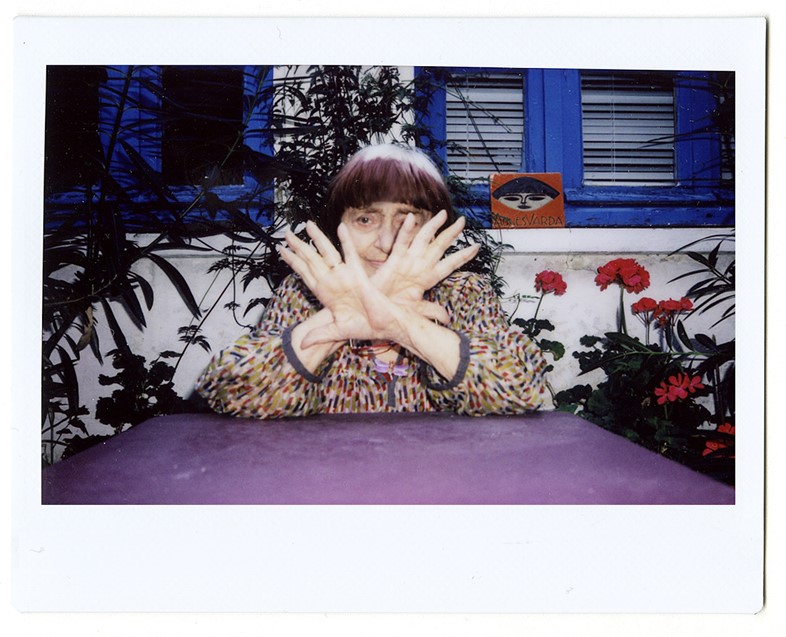
Perhaps most powerful of all is the book’s concluding interview with Agnès Varda, at her all-purple house on the Left Bank in Paris, just one year before her death. In it, she enthusiastically speaks on filmmaking, Andy Warhol, and the immense beauty found in the lives of ordinary people. “If you look at people, we all share the desire of finding beauty in one way or another, and in fact, you can find beauty in every single person,” she says. “From my perspective, at least, she was trying to give as many memories as she could,” says Huerta Marin of the encounter. “Which I think was pretty moving.”
For Huerta Marin though, no one portrait stands out as is his favourite. “It’s a journey that I will forever carry with me, in every way possible, because every encounter was very special,” he says. “I just want to leave a document of these wonderful, incredible, groundbreaking artists and their voices.”
Portrait of an Artist: Conversations with Trailblazing Creative Women by Hugo Huerta Marin is published by Prestel and is available from today.


